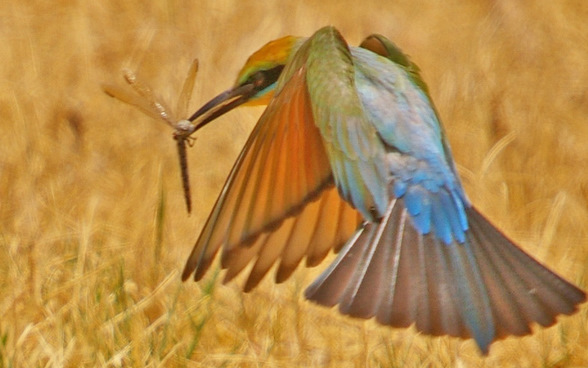Size
21 – 28 cm long; male wingspan 34 cm, female 31 cm
Behaviour
Call
A liquid, trilling “prrp prrp”, usually given in flight.
Diet
Mainly bees and wasps but also other insects such as dragonflies and damselflies, as well as moths and butterflies. Most insects are captured in flight, although some insects are very occasionally taken from the ground and foliage. Bees and wasps are rubbed against a perch to remove their sting before they are eaten, and other prey is usually beaten against the perch before being eaten.
Flight
Swift, and may include a series of rapid twists and turns when in pursuit of prey. It is usually seen in pairs or small flocks but sometimes occur in larger groups, sometimes of up to 500, when on migration.
Movement
Its patterns of movement are complex and not completely understood. After breeding, southern populations move north between February and June (mostly between March and May) to spend the winter in northern Australia, New Guinea or eastern Indonesia. They return to their breeding areas in southern Australia between August and early November, though mostly between mid-September and mid-October. In northern Australia, part of the population is present throughout the year, with some individuals moving to different habitats during the non-breeding season, while other birds from the population migrate to southern Australia.
Breeding
It nests in loose colonies that may contain up to 50 pairs, although some pairs nest solitarily. They sexes select a site the banks of rivers, creeks or dams, roadside cuttings, gravel pits or quarries or cliffs, where both sexes (though mostly the female) dig a long tunnel. At the end of the tunnel is a nesting chamber, sometimes lined with grass or feathers. Between two and eight (usually five) pearl-white eggs are laid, which are incubated by both parents for 22–31 days. The young remain in the nest for 23–36 days, where they are fed by both parents. They continue to be fed for 2–4 weeks after they leave the nest. The parents are sometimes assisted by ‘helper’ birds, usually males.
Field Guide
Improve your identification skills. Download your Rainbow Bee-Eater field guide here!





